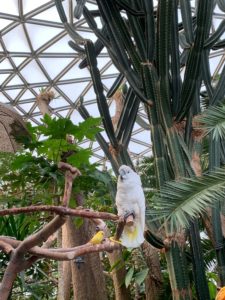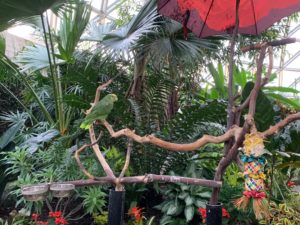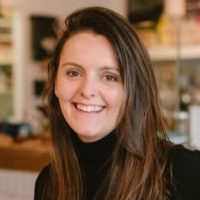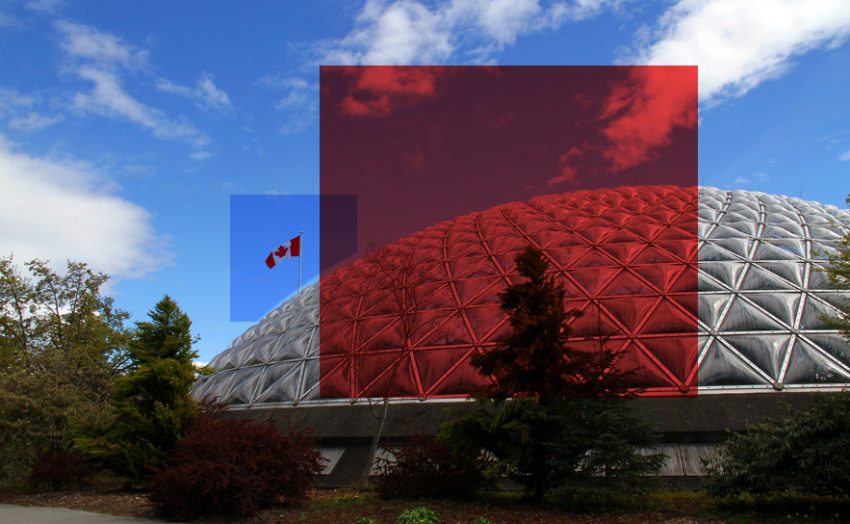Conservation and biodiversity: An interview with an expert
March 20, 2019
6 min read
We recently visited Vancouver’s amazing Bloedel Conservatory to have a chat with their superintendent, Bruce McDonald. We talked about conservation, biodiversity and how you can do your part to protect the planet!
 Can you tell us a little bit about yourself?
Can you tell us a little bit about yourself?
I am Bruce McDonald, and I’m the superintendent for Bloedel Conservatory and Sunset Nursery in Vancouver.
What is Bloedel Conservatory, and what is its main mission?
Bloedel Conservatory is a floral conservatory at the top of Vancouver. It was built fifty years ago, with the goal of connecting people with tropical plants that they wouldn’t normally see in their day-to-day life.
What are the top things you wish everyone knew about biodiversity and conservation?
That it really matters!
I think people often don’t see how little changes affect the bigger picture, and that everything is interconnected. I love this quote from John Muir, a conservationist from the 1800’s, he said:
“When one tugs at a single thing in nature, he finds it attached to the rest of the world”
I really believe in this sentiment. Although you might not see a change in one day, or even in ten years – everything that you do creates an impact. Individual actions add up, and we’re seeing that now with global warming and the lack, or loss, of biodiversity.
What advice would you give to someone who was interested in biodiversity and conservation, and wanted to have an impact on the cause?
Do your homework first. Really figure out what you want to do, what you want to connect yourself with, and be passionate about it. Find an organization to get involved with – it could be local, it could be global – it could be anything! Just connect yourself with like-minded people, and be passionate about it. That’s my biggest advice!
What do you see as the biggest issue in biodiversity and conservation today?
Global warming is the big one of course. I am also interested in is the overuse of single-use plastics, and how you can cut back on your consumption.
Roughly 18 billion pounds of plastic waste flows into the oceans every year from coastal regions – NatGeo
It bothers me when I go to the grocery store and see everything is pre-packaged in plastic when it just doesn’t need to be. I always take my own bags to avoid using plastic ones, and choose to wrap things in paper rather than plastic when possible.
I worked at VanDusen Botanical Garden for about twenty-four years, and during this time I worked in the heirloom vegetable garden. This experience made me realize just how narrow a lane we are in when it comes to the produce we can buy. I think it’s something like over 90% of the original species that people would have grown historically no longer exist. To me, it’s important to maintain diversity, and you can do this by growing your own food, and choosing to grow things that are unusual. Buy something that is old, and something that you can save the seed on.
What are your most memorable stories from your time working at Bloedel Conservatory?
Last summer, we had an Amorphophallus Titanum that was named Uncle Fester. I worked on it on both ends, from growing it, to putting it on display at Bloedel. Originally, we weren’t sure we would display the plant. It looked like it was going to open when it was really tiny, which wouldn’t have been very dramatic. But, it just kept getting bigger and bigger! All of a sudden, it was five and a half feet, so we decided it had to go on display.
It was a big push to get it here, but it was worth it. In three days, we had roughly 25,000 people come to see Uncle Fester. People were lining up for three to four hours!
As it was such a juvenile plant, it didn’t stink as much as it could. It only stunk for a few hours, so by the time many people got to see it, the smell had passed. However, when I came in first thing in the morning the smell was strong – it smelled like a dead rat. Or rotting garbage.
Out of all the plants and birds at Bloedel conservatory, do you have any favourites?
 Plant-wise there’s a few cool things. We’ve got some carnivorous plants that are right at eye-level so you can peek inside, and see if there are any bugs in them. Also, the orchids are beautiful, and the tall palms.
Plant-wise there’s a few cool things. We’ve got some carnivorous plants that are right at eye-level so you can peek inside, and see if there are any bugs in them. Also, the orchids are beautiful, and the tall palms.
As for birds, I’m partial to Arthur. He came here when I first started twenty-eight years ago, and I was the first person he got attached to. He never used to climb on anyone, and then all of a sudden he was like my Bloedel boyfriend! I don’t know if he remembers me anymore. Life’s like that. But I think he does. I want to believe he does.
Thank you so much for sharing your knowledge and insights with us, Bruce!
If you’d like to help the cause, there are many different environmental charities on Charitable Impact that work to support biodiversity and conservation. You can check out some of the top environmental charities in Canada here.
We loved Bruce’s sentiment of taking the time to find charities that personally interest you. If you feel inspired by his story, why not start a free Impact Account today, pop some money in, and start researching for charities that really peak your interest!
Have your own story to share? Send us an email: [email protected]. We’d love to hear from you!

